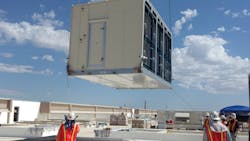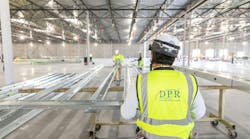Energy Efficiency: The Art & Science of Evaporative Cooling
This week’s “Voices of the Industry”column is from Harold Simmons, Global Director for Strategy at United Metal Products. Harold discusses the fine art of evaporative cooling which does offer significant energy savings.
Harold Simmons, Global Director of Strategy, United Metal Products
I have been privileged to work with some of the smartest engineers, designers, and owners in the data center industry. My company regularly provides some of the largest data centers in the world with energy efficient cooling solutions. One thing that is evident in working with these Fortune 200 companies and colocation providers is that the data center industry has become one of the most energy conscious sectors in business (contrary to the James Glanz New York Times Piece from a couple years ago).
In many ways, energy efficiency for hyper-scale energy users is self-directed and self-regulated. The reason is because when you reduce the operational costs of the facility this translates into increased financial savings. One of the most significant individual categories that the industry has dialed in on in recent years has been in the area of cooling.
The demand for energy efficient cooling solutions has been followed by an increase in the number of manufacturers who are saying “me too.” This can be both good and bad. It is good when manufacturers are able to provide end users with reliable data center cooling systems that reduce the overall energy used and lower the OPEX. However, an influx of manufacturers in an area can also be a bad thing for end users. This is because in many cases the manufacturers do not have the specific area expertise in the solutions they are bringing to the market. They may be excellent in providing electrical gear or off the shelf packaged DX units, but they do not have the expertise of other cooling system design.
New to Who?
One area where this can be seen quite clearly is in regards to evaporative cooling technologies. There are a number of manufacturers who are now offering “new” evaporative cooling solutions to the marketplace. The reality is that most of these so called “new” offerings are only new to the manufacturer. They are not new technologies that have not previously existed.
As a result some data center owners have had issues with unqualified manufacturers claiming they can provide an evaporative cooling solution. On paper the solution may look attractive, however, it is imperative that the owner/engineers engage at a deep level with the manufacturer to truly understand their level of expertise.
Any data center owner that is looking to apply evaporative technology on their facility for cooling should be very aware of the fact that evaporative cooling is both an art and science. There is hard scientific data behind the psychrometric chart, dew point levels, dry bulb, and wet bulb temperatures. However, there is an art in moving the science from theory into practice. The art is only learned through years of experience and applications. One example of this is in regards to some of the indirect evaporative systems that are currently being offered in the marketplace that use significantly more water than the most energy efficient indirect solutions. The walk away for a data center owner is to make sure to engage with a manufacturer who has been around long enough to know how the art and science of evaporative cooling come together in the process of manufactured equipment.
Harold Simmons, is the Global Director of Strategy for United Metal Products.


